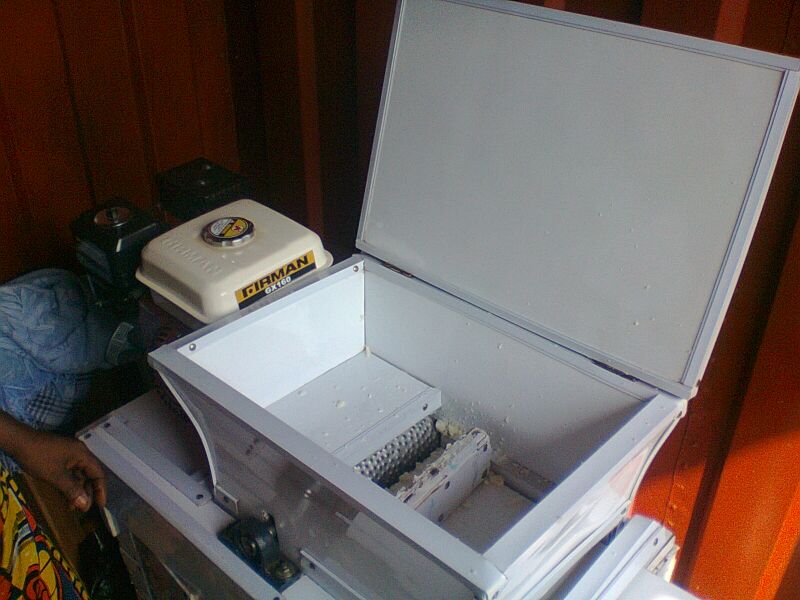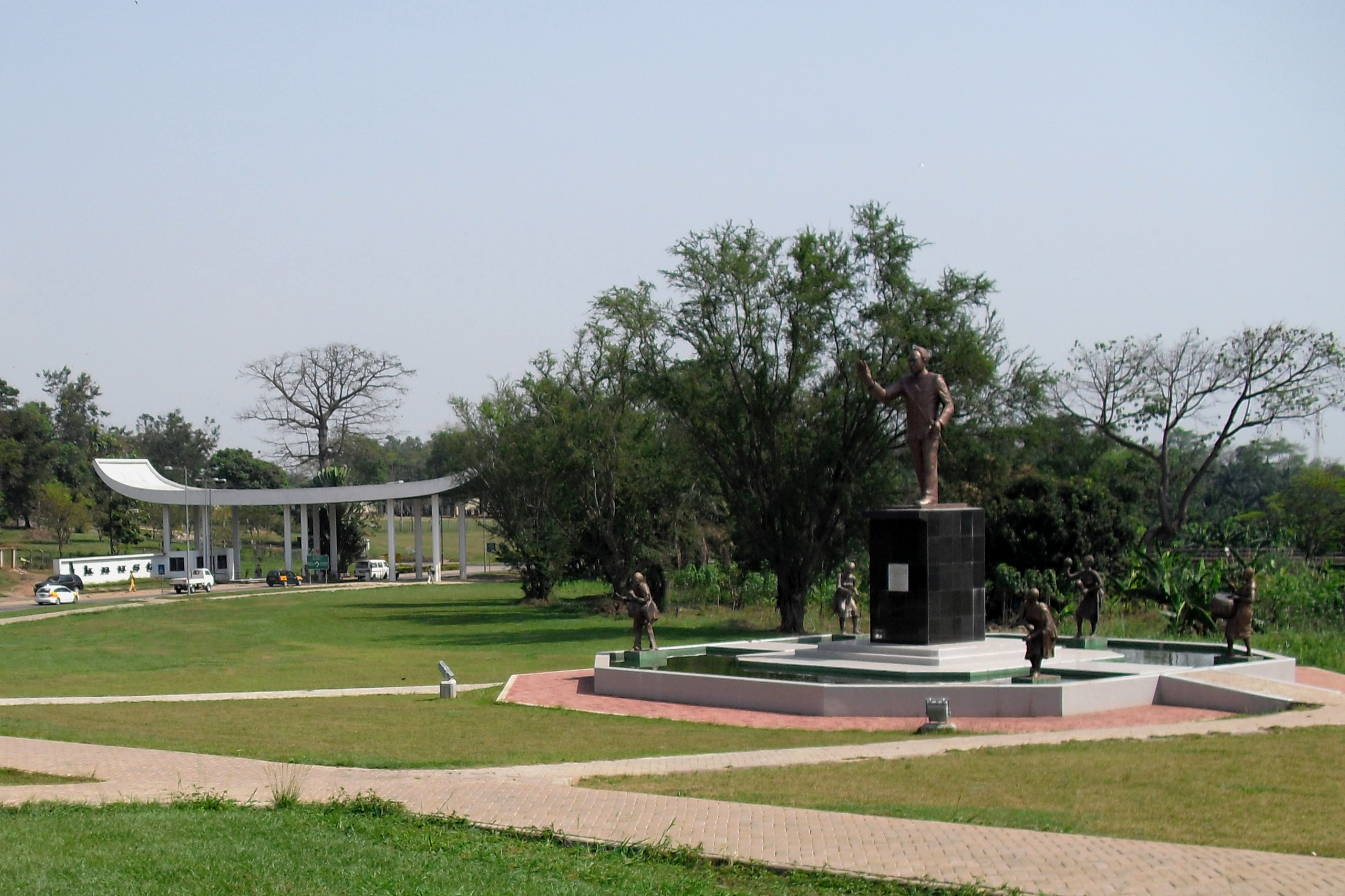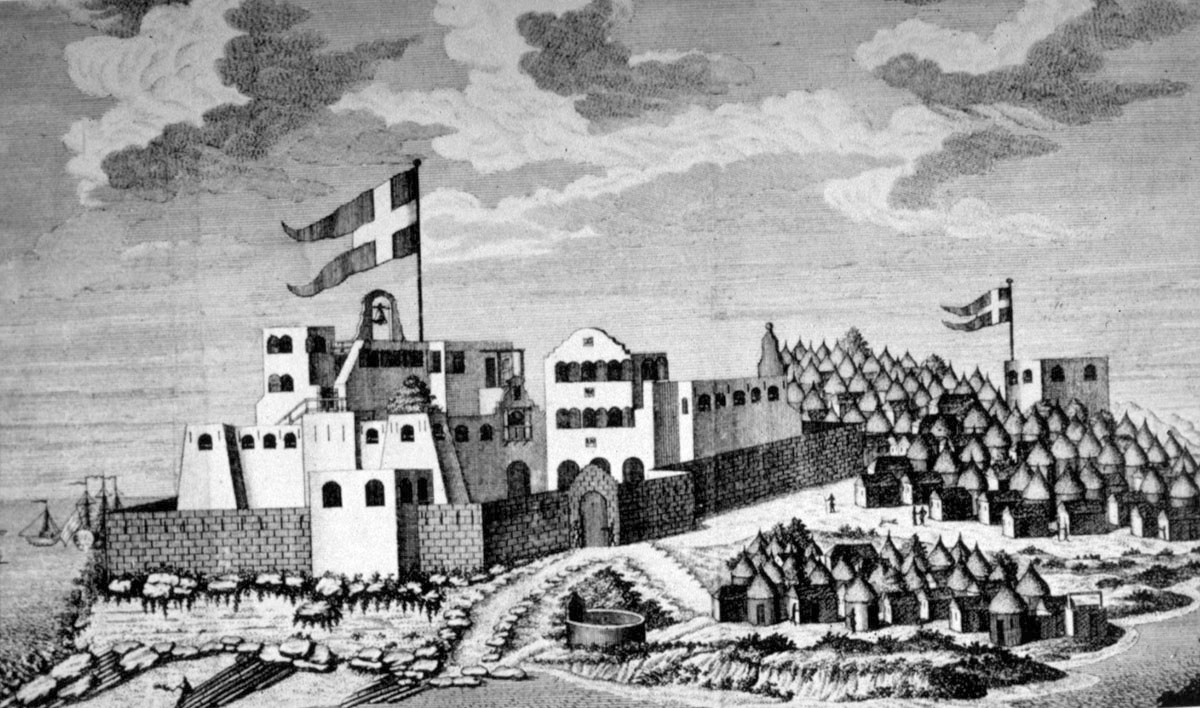|
Fufu Machine
A fufu machine is a kitchen appliance used to pound cooked starchy vegetables, particularly cassava, plantains, or yams, into the West and Central African staple food fufu. Fufu machines can achieve the fine, dough-like, pasty texture of fufu in about one minute; traditional hand-pounding methods generally required at least 30 minutes for the same result. Development The first fufu machine was developed in 2004 by Ghanaian electrical-equipment dealer Fadegnom Charles, who produced small numbers of electric fufu machines for local consumption. A mass-marketable design by a team led by Professor Kwadeo Kesse, Dr Lawrence Ansong and R.E Doddoo at Kwame Nkrumah University of Science and Technology (KNUST) was released shortly thereafter. The machine saw significant adoption in both homes and small businesses in Accra by 2014. In 2017, a Togo Togo, officially the Togolese Republic, is a country in West Africa. It is bordered by Ghana to Ghana–Togo border, the west, Benin to ... [...More Info...] [...Related Items...] OR: [Wikipedia] [Google] [Baidu] |
Cassava
''Manihot esculenta'', common name, commonly called cassava, manioc, or yuca (among numerous regional names), is a woody shrub of the spurge family, Euphorbiaceae, native to South America, from Brazil, Paraguay and parts of the Andes. Although a perennial plant, cassava is extensively cultivated in tropical and subtropical regions as an annual crop for its edible starchy tuberous root. Cassava is predominantly consumed in boiled form, but substantial quantities are processed to extract cassava starch, called tapioca, which is used for food, animal feed, and industrial purposes. The Brazilian , and the related ''garri'' of West Africa, is an edible coarse flour obtained by grating cassava roots, pressing moisture off the obtained grated pulp, and finally drying it (and roasting in the case of both and ''garri''). Cassava is the third-largest source of carbohydrates in food in the tropics, after rice and maize, making it an important staple food, staple; more than 500 million pe ... [...More Info...] [...Related Items...] OR: [Wikipedia] [Google] [Baidu] |
Cooking Banana
Cooking bananas are a group of banana cultivars in the genus ''Musa (genus), Musa'' whose fruits are generally used in cooking. They are not eaten raw and are generally starchy. Many cooking bananas are referred to as plantains or 'green bananas'. In botanical usage, the term "plantain" is used only for true plantains, while other starchy cultivars used for cooking are called "cooking bananas". True plantains are cooking cultivars belonging to the AAB group, while cooking bananas are any cooking cultivar belonging to the List of banana cultivars, AAB, AAA, ABB, or BBB groups. The currently accepted scientific name for all such cultivars in these groups is Musa × paradisiaca, ''Musa'' × ''paradisiaca''. Fe'i bananas (''Musa'' × ''troglodytarum'') from the Pacific Islands are often eaten roasted or boiled, and are thus informally referred to as "mountain plantains", but they do not belong to any of the species from which all modern banana cultivars are descended. Cooking bananas ... [...More Info...] [...Related Items...] OR: [Wikipedia] [Google] [Baidu] |
Yam (vegetable)
Yam is the common name for some plant species in the genus ''Dioscorea'' (family Dioscoreaceae) that form edible tubers (some other species in the genus being toxic). Yams are perennial herbaceous vines native to Africa, Asia, and the Americas and cultivated for the consumption of their starchy tubers in many temperate climate, temperate and tropics, tropical regions. The tubers themselves, also called "yams", come in a variety of forms owing to numerous cultivars and related species. Description A Monocotyledon, monocot related to lilies and grasses, yams are vigorous herbaceous, perennial plant, perennially growing vines from a tuber. Some 870 species of yams are known, a few of which are widely grown for their edible tuber but others of which are toxic (such as ''Dioscorea communis, D. communis''). Yam plants can grow up to in length and high. The tuber may grow into the soil up to deep. The plant disperses by seed. The edible tuber has a rough skin that is diffi ... [...More Info...] [...Related Items...] OR: [Wikipedia] [Google] [Baidu] |
Fufu
Fufu (or fufuo, foofoo, foufou ) is a pounded meal found in West African cuisine. It is a Twi word that originates from the Akans in Ghana. The word has been expanded to include several variations of the pounded meal found in other African countries including Sierra Leone, Liberia, Cote D'Ivoire, Burkina Faso, Benin, Togo, Nigeria, Cameroon, the Democratic Republic of Congo, the Central African Republic, the Republic of Congo, Angola and Gabon. It also includes variations in the Greater Antilles and Central America, where African culinary influence is high. Although the original ingredients for fufu are boiled cassava, plantains, and cocoyam, it is also made in different ways in other West African countries. In Ghana, Ivory Coast, and Liberia, they use the method of separately mixing and pounding equal portions of boiled cassava with green plantain or cocoyam, or by mixing cassava/plantains or cocoyam flour with water and stirring it on a stove. Its thickness is then adj ... [...More Info...] [...Related Items...] OR: [Wikipedia] [Google] [Baidu] |
Ghana
Ghana, officially the Republic of Ghana, is a country in West Africa. It is situated along the Gulf of Guinea and the Atlantic Ocean to the south, and shares borders with Côte d’Ivoire to the west, Burkina Faso to the north, and Togo to the east. Ghana covers an area of , spanning diverse ecologies, from coastal savannas to tropical rainforests. With nearly 35 million inhabitants, Ghana is the second-most populous country in West Africa. The capital and largest city is Accra; other significant cities include Tema, Kumasi, Sunyani, Ho, Cape Coast, Techiman, Tamale, and Sekondi-Takoradi. The earliest kingdoms to emerge in Ghana were Bonoman in the south and the Kingdom of Dagbon in the north, with Bonoman existing in the area during the 11th century. The Asante Empire and other Akan kingdoms in the south emerged over the centuries. Beginning in the 15th century, the Portuguese Empire, followed by other European powers, contested the area for trading r ... [...More Info...] [...Related Items...] OR: [Wikipedia] [Google] [Baidu] |
Kwame Nkrumah University Of Science And Technology
Kwame Nkrumah University of Science and Technology (KNUST), commonly known as UST, Tech or Kwame Tech, is a public university located in Kumasi, Ashanti region, Ghana. The university focuses on science and technology. It is the second public university established in the country, as well as the largest university in the Ashanti Region of Ghana. KNUST has its roots in the plans of Prempeh I, Agyeman Prempeh I, a ruler of the Ashanti Empire, Ashanti Kingdom, to establish a university in Kumasi as part of his drive towards modernization of his Ashanti Kingdom, Ashanti kingdom. This plan never came to fruition due to the clash between British Empire, British empire expansion and the desire of Prempeh I, King Prempeh I to preserve his Ashanti kingdom's independence. However, his younger brother and successor, Osei Tutu Agyeman Prempeh II, King Asantehene Agyeman Prempeh II, upon ascending to the Golden Stool in the year 1935, continued with this vision. Events in the Gold Coast (regio ... [...More Info...] [...Related Items...] OR: [Wikipedia] [Google] [Baidu] |
Accra
Accra (; or ''Gaga''; ; Ewe: Gɛ; ) is the capital and largest city of Ghana, located on the southern coast at the Gulf of Guinea, which is part of the Atlantic Ocean. As of 2021 census, the Accra Metropolitan District, , had a population of 284,124 inhabitants, and the larger Greater Accra Region, , had a population of 5,455,692 inhabitants. In common usage, the name "Accra" often refers to the territory of the Accra Metropolitan District as it existed before 2008, when it covered .Sum of the land areas of Accra Metropolitan District, Ablekuma Central Municipal District, Ablekuma North Municipal District, Ablekuma West Municipal District, Ayawaso Central Municipal District, Ayawaso East Municipal District, Ayawaso North Municipal District, Ayawaso West Municipal District, Korle Klottey Municipal District, Krowor Municipal District, La Dade Kotopon Municipal District, La Dadekotopon Municipal District, Ledzokuku Municipal District, and Okaikwei North Municipal District, Okaiko ... [...More Info...] [...Related Items...] OR: [Wikipedia] [Google] [Baidu] |
Togo
Togo, officially the Togolese Republic, is a country in West Africa. It is bordered by Ghana to Ghana–Togo border, the west, Benin to Benin–Togo border, the east and Burkina Faso to Burkina Faso–Togo border, the north. It is one of the least developed countries and extends south to the Gulf of Guinea, where its capital city, capital, Lomé, is located. It is a small, tropical country, spanning with a population of approximately 8 million, and it has a width of less than between Ghana and its eastern neighbour Benin. Various peoples settled the boundaries of present-day Togo between the 11th and 16th centuries. Between the 16th and 18th centuries, the coastal region served primarily as a Atlantic slave trade, European slave trading outpost, earning Togo and the surrounding region the name "The Slave Coast of West Africa, Slave Coast". In 1884, during the scramble for Africa, German Empire, Germany established a protectorate in the region called Togoland. After World War I ... [...More Info...] [...Related Items...] OR: [Wikipedia] [Google] [Baidu] |
Cooking Appliances
Cooking, also known as cookery or professionally as the culinary arts, is the art, science and craft of using heat to make food more palatable, digestible, nutritious, or safe. Cooking techniques and ingredients vary widely, from grilling food over an open fire to using electric stoves, to baking in various types of ovens, reflecting local conditions. Types of cooking also depend on the skill levels and training of the cooks. Cooking is done both by people in their own dwellings and by professional cooks and chefs in restaurants and other food establishments. Preparing food with heat or fire is an activity unique to humans. Archeological evidence of cooking fires from at least 300,000 years ago exists, but some estimate that humans started cooking up to 2 million years ago. The expansion of agriculture, commerce, trade, and transportation between civilizations in different regions offered cooks many new ingredients. New inventions and technologies, such as the invention of ... [...More Info...] [...Related Items...] OR: [Wikipedia] [Google] [Baidu] |
Ghanaian Cuisine
Ghanaian cuisine refers to the meals of the Ghanaian people. The main dishes of Ghana are centered around starchy staple foods, accompanied by either a sauce or soup as well as a source of protein. The primary ingredients for the vast majority of soups and stews are tomatoes, hot peppers, onions and some local species. As a result of these main ingredients, most Ghanaian jollof rice, soups, and stews appear red or orange. Ghanaian foods heavily rely on traditional food crops grown in Ghana, combined with crops introduced through colonial and globalized crops, gardens and cuisine. Main staple foods The typical staple foods in the southern part of Ghana include cassava and plantain. In the north, the main staple foods include millet and sorghum. Yam, maize and beans are eaten across Ghana; sweet potatoes and cocoyam are important vegetables in Ghanaian cuisine. With the advent of globalization, cereals such as rice and wheat have been increasingly incorporated into Gh ... [...More Info...] [...Related Items...] OR: [Wikipedia] [Google] [Baidu] |








